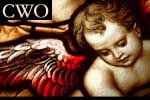Review: NIV God's Word for Gardener's Bible
edited by Shelley Cramm, General Editor
And who is Shelley Cramm, you might ask? I don't know who she is. If she is popular in Christian circles, I'm unaware of that. Maybe she's popular in gardening, horticulture, and landscape cultures. Funny thing, though: Although she is a total unknown -- at least to me-- this is one of the best study Bible's I've read. I'm really digging it. (I m so tempted to put in a lot of plant puns in this review.)
I thought this Bible study would be sort of homespun and cutesy. It's not. It has some great devotionals, though. Devotionals that touch the soul but which are also incredibly informative. I probably will not look at figs the same way, after the section on the significance of the fig tree in the garden of Eden.
Gardeners who read their Bible are probably already aware of the significants of pests, droughts, watering, planting, pruning, etc. I'm sure gardeners see the Bible through gardeners' eyes, just as scifi writers see the Bible as a book by a creator about worldbuilding, or lawyers see the Bible in terms of legal documents. But do most gardeners know about the plants in the Gardens in Persia?
There are some wonderful insights in this book and some great devotionals. One of my favorite is the discussion of Xerxes going into the garden after Esther had revealed Haman's plot to him. It hadn't occurred to me to see the situation as symbolic of going into one's place of repose to ponder bad news. Yes, I thought as I read the devotional, this rings spiritually true.
The book contains 260 daily readings and 52 weekend readings all arranged in weekly themes. One cannot go a few pages in this Bible without seeing these devotionals. The weekly themes are divided into sections which include Garden Tour, Garden Work, Garden Stories. These sections are further subdivided. For instance, Garden stories include devotionals on Seasons, Sun and Shade, Weather, Pest and pestlence, Jesus' Parables, Israel's horticultural allegories, Away from the Last Supper, Jesus, the Seed, the Root, Branch, and Firstfruit, Harvest of Righteousness, Intimacy with God in the Garden. All these readings are scattered (sowed) throughout the Bible but there is a guide to all of them collected in the Introduction.
Each devotional contains a verse to meditate on, a passage to read, and other Biblical passages with which to compare to the original verse. The devotional follows, which may or may not include quotes from gardening books, and historical and hortological backgrounds. The devotional ends with a prayer. Then a short sentence directs the reader to other devotions in that particular category.
One of the best parts of this study Bible is how the editor shows the thematic flow of certain plants. The fig leaf in the Garden of Eden pops up in the Genesis section. Later, the cursed fig tree closes the metaphor. The meaning and purpose of the olive leaf in the dove's mouth as a symbolic truth to Noah on through to the Mount of Olives. The lentils Esau ate in exchange for his birthright, through the rape of Tamar to Ezekiel's bread to Daniels pulses. Rahab's use of flax and the Proverb 31 woman's use of flax. And now I certainly understand why the prophetess Deborah would sit under a palm tree. After reading through this Bible I'm tempted to wade through and meditate on all the floral images and spiritual essences that are hinted at in the Song of Solomon.
The book is hardcover and feels sturdy. It's thicker and smaller than the other Bible studies I've been reading, which makes it handy for one's church bag. The print is normal-sized. I would've liked a large print but that might be asking too much. The translation is the NIV. I highly recommend this book to all Bible readers but especially to folks who love gardening.
I received this book free in exchange for a fair and honest review









